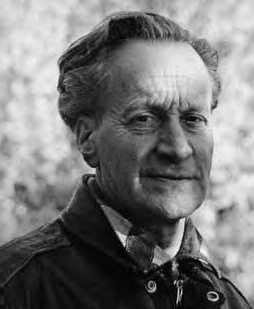
Ādolfs Skulte
(28.10.1909 - 20.03.2000 )
Ādolfs Skulte is a personality in the history of Latvian music, who from the 1930s until the turn of the century in his creative work consistently developed the traditions and ideas postulated by his teacher, the Latvian music classicist Jāzeps Vītols (1863–1948).
For his entire long life and range of creative work, Ā. Skulte created music with a classically romantic expression, still, he never has doubted his contemporaries’ and students’ desires to express differing ideas, often foreign to his own artistic mentality. This is proven by the fact, that under the direction of Ā. Skulte, composition knowledge was gained by such unique Latvian composers like, for example, Ģederts Ramans (1927–1999), Artūrs Grīnups (1931–1989), Vilnis Šmīdbergs (1944), Romualds Kalsons (1936), Romualds Grīnblats (1930–1995), Imants Kalniņš (1941), Mārtiņš Brauns (1951), and Imants Zemzaris (1951).
Ā. Skulte was born on October 28th, 1909 in Kiev in the Ukraine. The composer’s father was the Latvian builder Pēteris Skulte, and his mother – the Italian Victoria Rizzolatti. In 1921, the family of Pēteris Skulte returned to live in Latvia. In 1928, Ādolfs Skulte enrolled in the Engineering Department at the University of Latvia, and in 1930, the composer began study at the Latvian Conservatory. In 1931, his engineering studies at the University were interrupted, and in 1936, he graduated the practical composition class of J. Vītols at the Conservatory and also became a member of the faculty.
From 1948 to 1955, and from 1957 to 1972, Ā. Skulte led the J. Vītols Latvian State Conservatory composition department. In 1952, he was elected professor and worked in this occupation until the end of his life (the composer passed away on March 20th, 2000).
The musical style of Ā. Skulte is characterised by a refined impressionism, a lyrical warmth and a maximally balanced musical dramaturgical solutions. Ā. Skulte’s heritage of rich creative work surprises with an ability to captivatingly work in all classical music genres – instrumental and vocal instrumental chamber music, choir songs, symphonic and vocal symphonic music, creating operas and ballets, writing music for theatre productions and films (the composer has assisted in the creation of nine films of the Riga Film Studio, two of them – Rainis (1949), and Latviešu strēlnieka stāsts (The Story of a Latvian Rifleman) (1958) – are among the best in Latvian film history).
The best known works of the composer are the ballet Brīvības sakta (The Brooch of Freedom), and the symphonic portrayals Viļņi (Waves) and Horeogrāfiskā poēma (Choreographic Poem), the Third Symphony (Kosmiskā [The Cosmic]), the Fifth Symphony, the Seventh Symphony (Saudzējiet dabu! [Preserve Nature!]), the Eighth Symphony, many choir songs, among which is the beautiful Quasi una sonata per coro da camera.
Jānis Kudiņš
